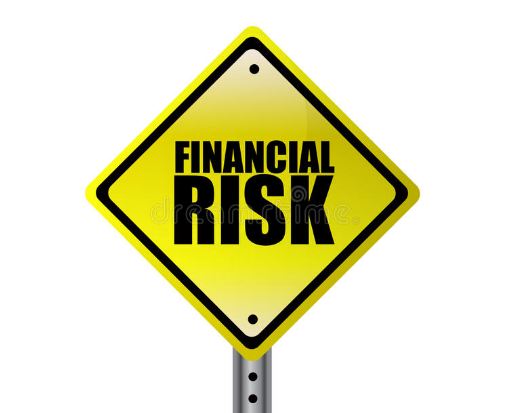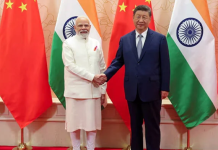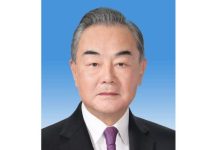By Huan Yuping, People’s Daily
The term “de-risking” has been replacing “decoupling” these days, becoming a new argument of some Western politicians when they talk about economic relations with China. It is used to prettify their negative policies aiming at de-sinicization.
The so-called “de-risking” is in essence the politicization and ideologicalization of economic and trade issues. It is against laws of economics, disturbs the security and stability of global industrial and supply chains, and finally impedes the recovery of the world economy.
“De-risking may feel more diplomatic than decoupling.” The New York Times just told the truth.
The high-profile “decoupling” strategy launched by the last U.S. administration has been approved to be totally unrealistic. Though the current U.S. administration claimed it has no intention to contain China, its scheme to undermine China-U.S. economic relations through political means remains unchanged. Therefore, some in the United States created new rhetoric as the “decoupling” strategy has lost its support.
The qualifier of “not seeking ‘decoupling'” is added to “de-risking” because the latter shall sound different and thus be more misleading. However, the so-called “de-risking” is just “old wine in a new bottle.”
First of all, policies under “de-risking” still aim at technological blockade, investment review and transfer of supply chains. A high-ranking official of the U.S. government recently said in a speech that the United States wants to de-risk and diversify its relationship with China, not decouple. However, the official, at the same time, made reference to the approach of “small yard, high fence”to critical technology .
What’s more, the true intention of “de-risking” is still containing China and serving White House’s wrong policies on China. U.S. magazine Foreign Affairs noted that the strategy of de-risking aims to limit China’s abilities in strategic sectors that have national security implications, reduce Beijing’s leverage over the West by eroding Chinese dominance of the market for certain essential inputs.
In today’s world, countries should be dependent on each other, and such interdependence doesn’t mean insecurity. “De-risking” is indeed “diplomatic,” but it cannot lift the United States out of the predicament in the country’s economic relations with China. On one hand, the White House is aware that “de-coupling” hurts its own interests and remains unrealistic; on the other hand, it is not willing to abandon its obsession of taking China as an “imaginary enemy” and is seeking “de-coupling” in another form. Such a self-contradictory mindset would only confine the United States in a cage that it has built.
Free trade and division of labor are the result of growing social productivity, and the formation and development of the global industrial and supply chains an outcome of economic globalization and market economy. To strengthen division of labor and collaboration among countries amid economic globalization leads to common progress.
China makes opportunities, not risks. China is the world’s second largest economy, biggest manufacturer, and largest trading country in goods. As a major trading partner for more than 140 countries and regions, it is continuously powering global growth.
The World Openness Report 2022 showed that China has made progress in its high-level opening up and constantly improved its openness index, becoming a key variable for economic globalization.
Gideon Rachman, chief foreign affairs commentator of the Financial Times, belies that de-risking trade with China is a risky business.
Pierre-Olivier Gourinchas, chief economist of the International Monetary Fund warned that “de-risking” is political manipulation that hurts the stability of global industrial and supply chains, and impedes global sci-tech progress and economic development. What the international society should be watchful about and resist is the promotion of de-sinicization in the name of “de-risking,” he said, adding that the trend of “de-risking” could see countries turn inward at the expense of global growth.
“There is a danger that the global economy could fragment into blocks,” the economist noted.
One of the goals of the United States in hyping the strategy of “de-risking” is to mislead its allies and then form a clique that contains China in the realm of economy. However, U.S. allies are clear and vigilant about the fact that such political calculation would hurt their own interests.
According to a poll launched by the European Council on Foreign Relations in 11 EU countries, 43 percent of respondents see China as “a necessary partner,” and there are more respondents believing cooperation with China would bring opportunities than those who think it creates risks.
Hungarian Foreign Minister Peter Szijjarto stressed that European countries should view China more objectively, and both “decoupling” and “de-risking” would be a suicide committed by the European economy.
The biggest risk stems from non-cooperation and the biggest hidden security threat is non-development.
As the world is facing increasing instability and uncertainty, every country has its own security concerns. However, abusing the concept of national security and taking it as an excuse for promoting protectionism and containing other countries would only make risks riskier and lead to more and bigger problems.
The historical trend of economic globalization has never changed. Today, the rapid advance of new technologies such as digital technology and artificial intelligence, is creating more favorable conditions for economic globalization. The world should not, and cannot return to a state of seclusion or isolation.
Cooperation is the only way out and the best way to deal with difficulties and challenges. Countries should follow the trend of history, cement the consensus on development, and continue their efforts to build an open world economy. They should oppose the politicization of economic issues and work together to keep global industrial and supply chains stable and smooth, and deliver the fruits of globalization to different countries and groups of people in a more equitable way.

















